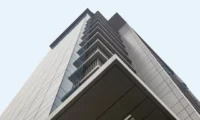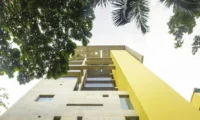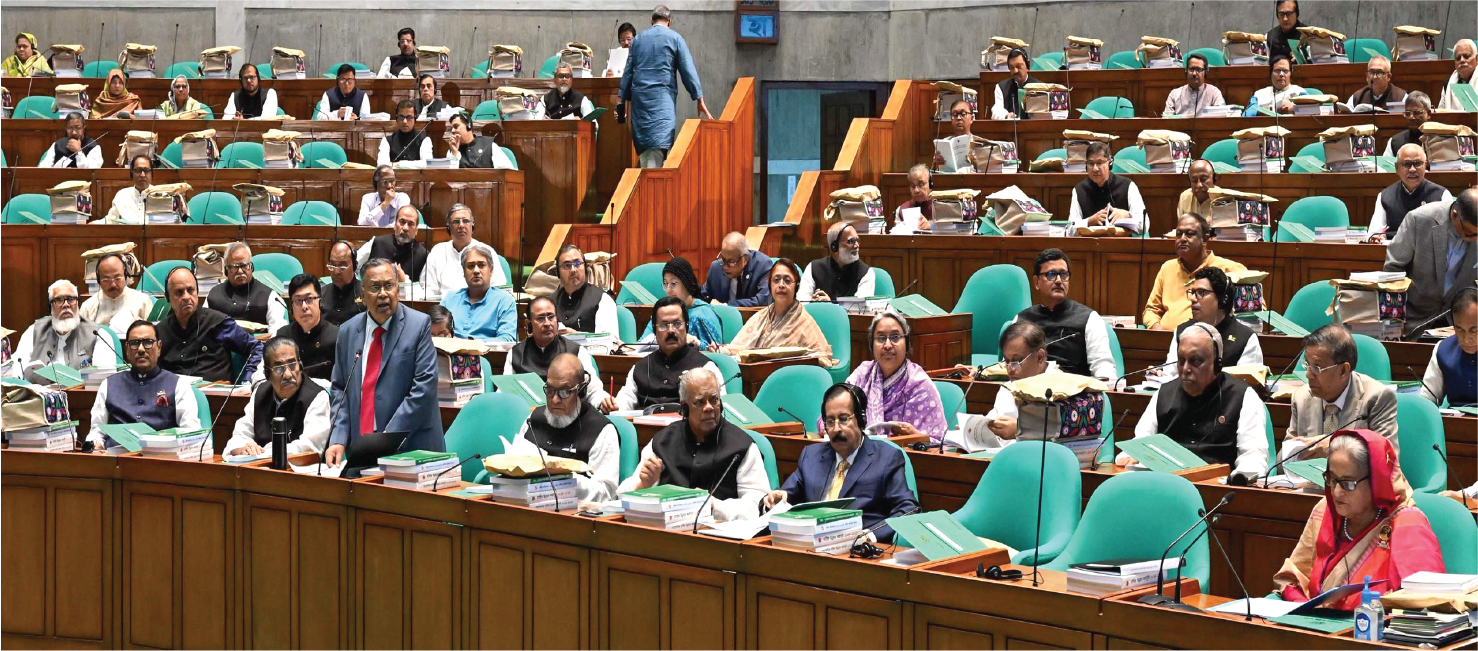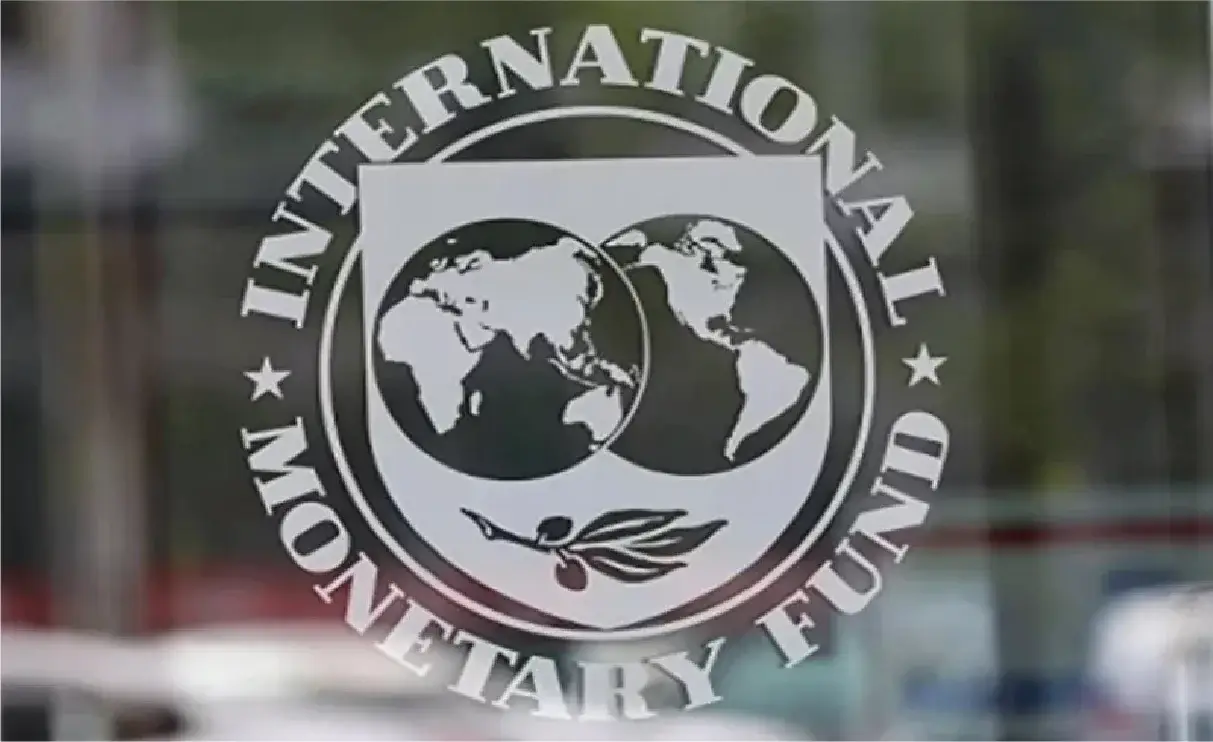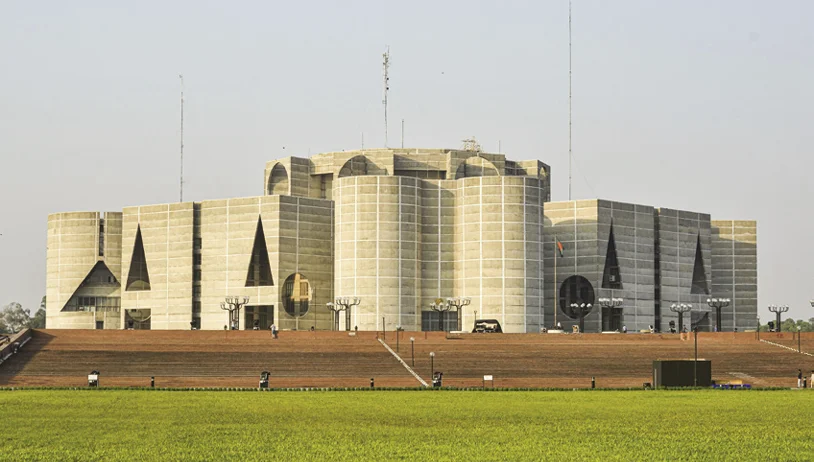
The current fiscal year’s national budget, passed by parliament on June 30, eyes taming inflation amid other major challenges to an economic rebound from the Covid-19 pandemic and recovery from impacts of Russia-Ukraine war. The annual outlay has finally stood at Tk 6,78,064 crore, 15.2 per cent of the gross domestic product (GDP) and of it, Tk 4,31,998 crore has been allocated for management cost and other non-development expenses and Tk 2,46,066 crore for annual development programme (ADP), which is also called development budget. The size of the budget for the fiscal year 2021-22 was Tk 6,03,081 crore. In the revised budget, it was brought down to Tk 5,93,500 crore.

The revenue income in the new budget has been projected to be Tk 4,33,000 crore. The target of the National Board of Revenue (NBR) has been set at Tk 3,70,000 crore, non-NBR tax at Tk 18,000 crore, and non-tax revenue at Tk 45,000 crore. Foreign grant receipt is projected at Tk 3,271 crore. The budget deficit is Tk 2,45,064 crore (without foreign grant) which is 5.5 percent of GDP. To meet the deficit, Tk 2,41,793 crore will come from local and foreign loans, Tk 1,06,334 crore will be borrowed from local banks and the target of foreign loan is Tk 95,458 crore. Tk 40,000 crore will come from non-bank sources. Also, a projected amount of Tk 35,000 crore will come from savings certificates. An amount of Tk 17,000 crore will be spent on foreign loan repayment.
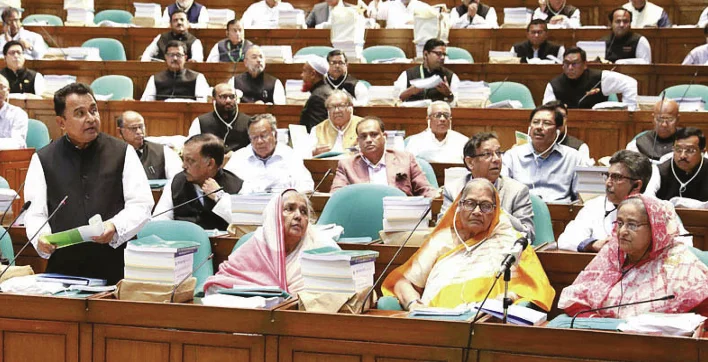
The GDP growth target has been set at 7.5 per cent and inflation projected at 5.6 per cent. The finance minister acknowledged inflation as a concern. The government is committed towards controlling inflation by preventing inconsistencies between supply and demand. However, inflation has risen recently due to external and some internal factors. The finance minister, in his budget speech, said the global causes of inflation include rising inflation among trade partners, rising fuel prices, depreciating currency, disruption of the global supply chain, and the Russia-Ukraine war. But no visible adequate measures have been taken in the budget to control inflation. Deficit budgets are driving inflation. “Certainly, we shall be able to transform Bangladesh into a hunger and poverty-free society by achieving SDG (Sustainable Development Goals) in 2030, a higher-middle income country by 2031, a knowledge-based, happy and prosperous developed country by 2041 and a secured delta by 2100,” said Mustafa Kamal in budget session of parliament.
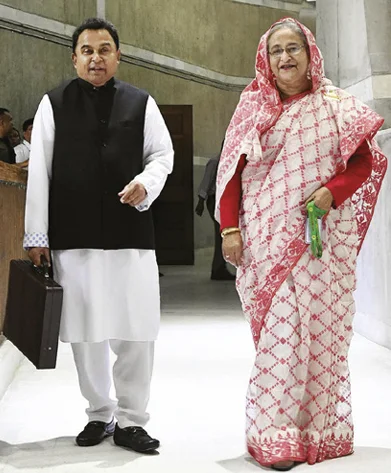
Middle class brought under tax net
The finance minister said the country’s middle or upper-class population is about 40 million, most of whom are not paying income tax. Efforts are being made to bring taxable people under the tax net by taking necessary steps to prevent tax evasion. As against a total TIN (taxpayers’ identification number) holder of 7 million, only three million are income taxpayers. The number of TIN holders will be raised to 10 million this year. Return submission will be made compulsory with some exceptions. The income tax exemption limit is Tk 0.3 million a year.
“Certainly, we shall be able to transform Bangladesh into a hunger and poverty-free society by achieving SDGs in 2030, a higher-middle income country by 2031, a knowledge-based, happy and prosperous developed country by 2041 and a secured delta by 2100.”
Huge trade deficit
According to statistics from Bangladesh Bank, the nation’s trade deficit in goods was US$33 billion for the last fiscal year 2021-22 when the merchandise trade deficit was $33.25 billion. The current account deficit crossed $18.5 billion compared to $23.78 billion in the year before (FY21). Amid a huge balance of payments deficit, economists emphasised limiting imports and raising remittances. Recent central bank data show a significant increase in imports has made the trade gap bigger, putting pressure on the foreign exchange reserve and exchange rates. Based on the “free on board” (fob) price, the value of goods imported in FY22 was $82.49 billion, as against only $60.68 billion in FY21. Consequently, imports grew by almost 36% in FY22. Income from exporting goods (on a free-on-board basis) grew by 33.45% and reached $49.24 billion in FY22. In FY21, the sum was $36.90 billion. The overall balance deficit totaled $5.38 billion by the end of FY22 whereas there was a surplus of $9.27 billion in FY2020-21. The country received $21.03 billion in remittances in FY22, showing a 15.12 per cent decline over the previous fiscal. The central bank sold more than $1 billion to banks in July when the country received $2.09 billion in remittances, which was 11.76% higher than the amount received in July last year. Bangladesh’s foreign exchange reserves fell below $40 billion for the first time in two years recently. This was due to higher import costs and a weaker Taka against US dollars. The situation occurred due to the dollar’s rise over the past few months, when the central bank took some steps to discourage imports. Bangladesh Bank also encouraged Bangladeshis living and working abroad to send remittances.
Ceramic sector needs budgetary support
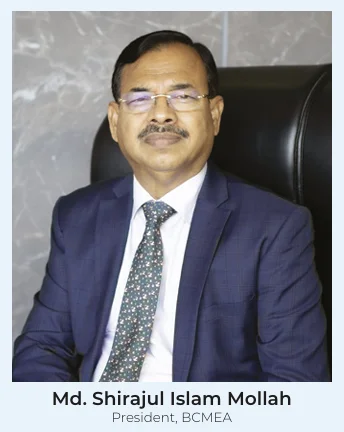
Mr. Mohammad Shirajul Islam Mollah, President of Bangladesh Ceramic Manufacturers and Exporters Association (BCMEA), in his budget reaction, demanded complete withdrawal of 15% and 10% supplementary duties imposed on domestic tiles and sanitary products respectively. He said if this is done, the price will decrease in the domestic market and the level of its use will increase. As a result, the government revenue will not decrease, rather increase overall. Commenting that ceramic tiles and sanitary products are no longer a luxury item, he said, they are considered essential construction materials. These are popular as eco-friendly products as they are helpful in creating a healthy environment. Ceramic is playing a helpful role in implementing the government’s ‘Sanitation for All’ programme. He said the ceramic sector is a labour-intensive industry with great potential. Machinery, technology and raw materials are not available in the country, so they have to compete with rich countries in procuring raw materials and technology as well as selling products. If a partial bond facility is provided along with production cost, the export market will increase and the entrepreneurs of the ceramic sector will be able to export the product.
Adjustment of water and moisture in import of raw materials
Ceramics is a process industry. About 80 per cent of its raw materials are natural mineral and clays. China clay (HS code 2507.00.00) and ball clay (HS code 2508.40.00) are used up to 60 per cent of the total materials used in manufacturing the product. As it is not in the country of origin, moisture and chemical water and other volatile substances exist up to 30% in imported soil or clay raw materials during the import period. Later on, another 15% of shortages or process losses occur at various stages of transportation, warehousing and production process. On average, up to 45% wastage is caused by moisture and manufacturing process deficiencies to reach the final stage of the finished product. However, hundred per cent of the imported products have to pay all kinds of customs and incidental expenses. This results in financial loss to the producer and increases the production cost. Sometimes the wastage is assessed on the amount of the product produced and the sale is subject to VAT claims and penalties. Justice will be done to the producer if the process loss or waste along with moisture is taken into consideration up to 40% in the product price declaration. Thus producers will be saved from financial losses. Recently the minimum price for import of foreign made tiles has been reduced by NBR. While there is a 15 per cent supplementary duty on domestic products at the production stage and 15 per cent VAT at the point of sale, the reduction in tariff rates at the import stage encourages imports of foreign finished products and unfairly competes with domestic products. About $250 million worth of foreign currency is leaving the country every year, which is against the current government policy. It is possible to save this huge wastage of foreign exchange by increasing the tariff price or supplementary duty.
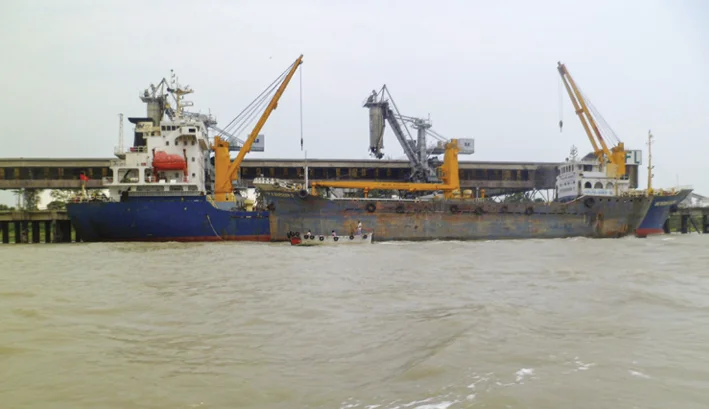
It is necessary to further increase the existing minimum tariff price along with imposition of additional supplementary duty to discourage import of foreign made ceramic tableware, tiles and sanitary ware to reduce foreign exchange expenditure. As a result of this, on the one hand, the hard-earned foreign exchange will be saved. It will be a timely decision. He said that ceramic tableware (porcelain/bone china/other ceramics) under headings 69.11 and 69.12 have been withdrawn from the list of minimum tariff for import of ceramic raw materials from abroad, which was mentioned in the previous budget. Instead of the word ‘ceramic’, this year’s budget mentions only the words ‘tiles’ and ‘sanitary’, so for the ceramic tableware companies, the import of these raw materials will be taxed at a higher rate under the ‘Others’ HS code. So, there will be no controversy or complications if there is only ‘Ceramic’ word in place of tiles and sanitary as before. As a result of this manipulation of words in this year’s budget proposal, there will be an opportunity to import goods under invoice. So, there is fear of money laundering and local producers facing unequal trade competition.
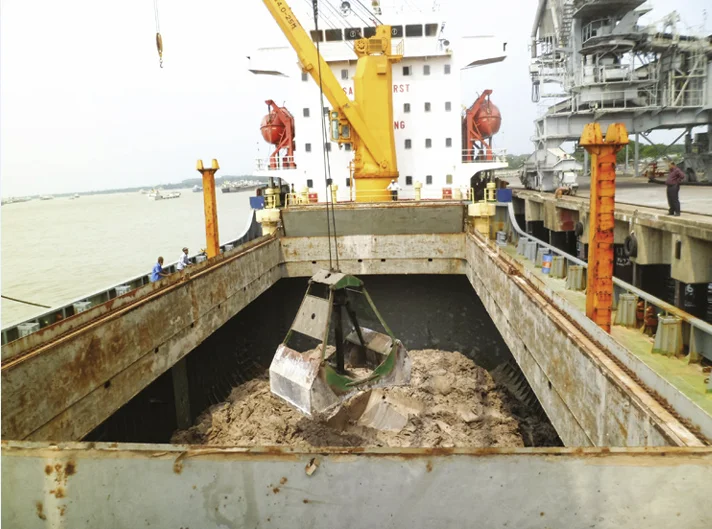
Tightening belt amid rising dollar, weakening taka
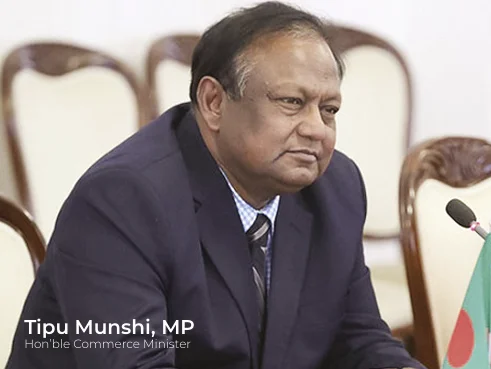
According to Commerce Minister Mr. Tipu Munshi, the ceramic sector can contribute better after readymade garments to increasing export diversification. Because the country’s ceramic products are now of international standards. He feels that there are some technical problems in determining the customs duty excluding the moisture of raw materials to reduce the production cost of ceramic products. Assuring necessary steps for research at the Tariff Commission, he said a standard should be set. An inter-ministry meeting should be held for this. Even then, at the production stage of ceramic products, the supplementary duty and VAT can be reduced by at least 50%, he said, adding that the Ministry of Commerce will write to the Ministry of Finance and NBR in this regard. He said the government will take necessary steps to reduce production cost of ceramic products by increasing skills and local designers.
Written by Asfia A Jahan



